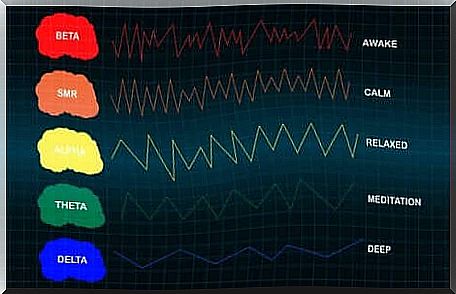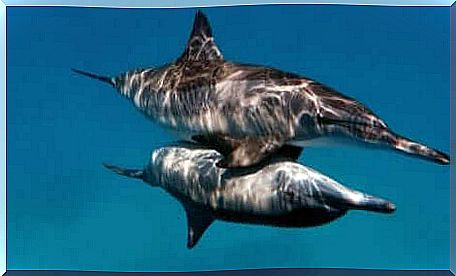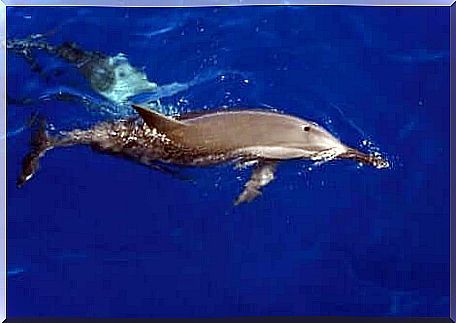Animals That Can Sleep With Only One Hemisphere

Have you ever wondered how whales or dolphins sleep? How do they come to the surface to breathe when they sleep? And what about birds that have made a long flight? Believe it or not, there are animals that can sleep while one side of the brain is still awake.
In the following we will go into this curious phenomenon in more detail and tell you more about the most famous cases in the animal kingdom.
Sleep and wakefulness
Living beings adapt their behavior and their physiology to their environment through biological rhythms. This means that based on biological parameters, they live at a regular time interval. This interval can be hours, days, or months. In addition, rhythms that repeat periodically over a period of time are called circadian rhythms.
Sleep and wakefulness form a circadian rhythm. The waking state is the period in which we are awake and in which sensory activity and motor skills are functioning. During sleep, on the other hand, we “switch off our senses” and reduce our motor skills.
This change in brain activity can be recorded in an electroencephalogram and can be recognized by the appearance of the waves that arise.

- Deep sleep consists of far-reaching slow vibrations.
- In contrast, the waking vibrations are fast and have a low amplitude.
Sleep studies can be carried out thanks to this type of recording. The pattern the brain executes during sleep provides a wealth of information about how it works in species where being partially awake is key to survival.
Which animals can sleep with only one hemisphere?
Marine mammals, birds and possibly some reptiles assume a half-wakeful state (also threshold consciousness) during the day. This state is necessary to keep breathing in the water or to stay awake in a hostile environment.
To stay half-awake, one part of the brain rests while the other remains alert and aware of its surroundings. This phenomenon is known as “unihemispheric sleep” and has been studied extensively in dolphins.
Dolphins sleep with one half of their brains . During this time, they keep one eye open to “watch” what is going on around them. Adults often keep the open eye on their pack mates and the young on their mothers. The amazing thing is that it all happens during continuous swimming.

Sleeping with only one half of the brain: the unihemispheric sleep of dolphins
Dolphins have a fairly large brain for their body. In fact, they come second in the ranking of brain sizes, with the human brain coming first.
The brains of these animals have many convolutions, these are the folds that run through the hemispheres of the brain. For example, the region responsible for hearing processing is very developed.
What is striking is the size of the corpus callosum, which is the physical connection between the two hemispheres. Experts believe this area is key to explaining why animals exist that can sleep with one half of their brains awake.
In addition, there is an alternation between the two halves of the brain, allowing them to rest fully while swimming and breathing with the half of the brain that remains “awake”.

Sleep with one eye open
In most mammals, a large part of the nerve fibers in the eye go to the opposite or contralateral half of the brain and a smaller part to the hemisphere on the same side.
The dolphin is an exception. Each eye projects its nerve fibers into the contralateral hemisphere. So this fact explains why they are able to open the eye opposite the sleeping hemisphere.
Dolphins are social animals and often move in groups. Constant surveillance in these so-called schools can prevent attacks from predators that can come from any direction and at any time while in open habitats such as the ocean.
Unihemispheric sleep has also been observed in birds. They can still perceive their surroundings with one eye while they are sleeping when they are crouching on the floor. This ability is also a valuable skill during migrations or long flights.
We are always amazed at the abilities that animals have and use for their survival. We hope that we were able to arouse your interest in this interesting topic!









